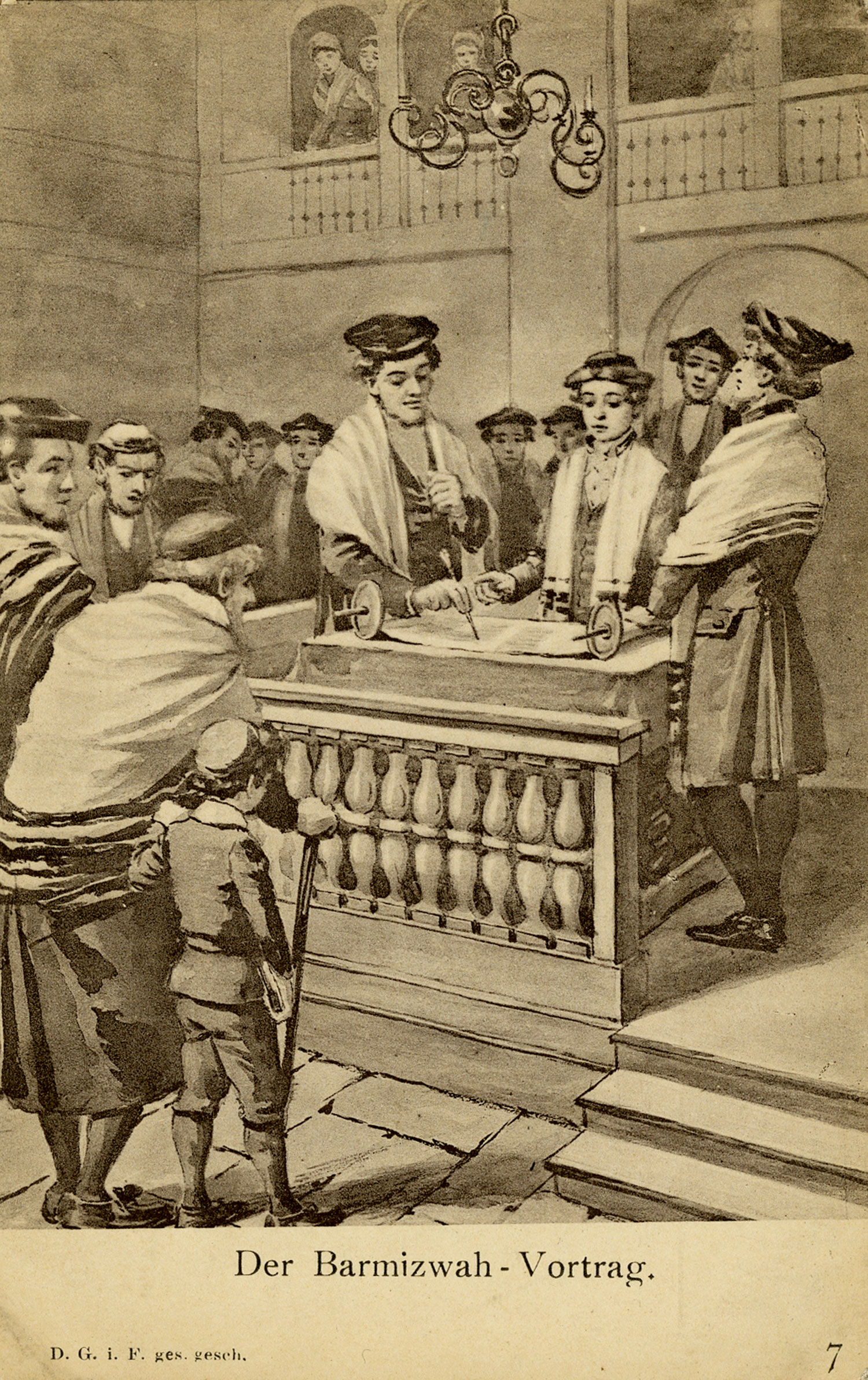Bar mitzvah, meaning “son of the commandment,” is the central coming-of-age ritual for Jewish boys. Rarely before the 20th century were girls similarly recognized in formal ceremonies; only in the early 1900s was a similar ceremony, the bat mitzvah, created for them, and the tradition is not universal among the various branches of Judaism. Today, in Conservative, Reform, and Reconstructionist congregations, the bar and bat mitzvah are celebrated with largely the same rituals and obligations.
Traditionally, when a boy is 13 years old, he is recognized as an adult in the eyes of the community, especially in terms of Jewish ritual. He can now be counted as part of the minyan (required quorum of ten for Torah reading and some communal prayers) and he is now a full participant in synagogue life and subject to Jewish law. On the Sabbath following his 13th birthday, he is called up for the first time to read from the Torah. Before reading, the boy received special instructions and blessings; such moments, such as the blessing by a rabbi and the Torah reading, are represented in popular art as positive and optimistic images of Jewish continuity.
The artist Hermann Junker (1839–1899) produced this painting during a time when the bar mitzvah was being rejected by the German Reform movement, as it moved toward an alternative ceremony known as confirmation. While confirmation and bar mitzvah serve two separate purposes, the original intent of the Reform movement was to supplant the bar mitzvah entirely. For almost a century, celebration of the bar mitzvah, like the use of an organ in a synagogue, created a rift between traditional and Reform congregations. Today, however, bar mitzvah ceremonies are widely practiced among all branches of Judaism.
